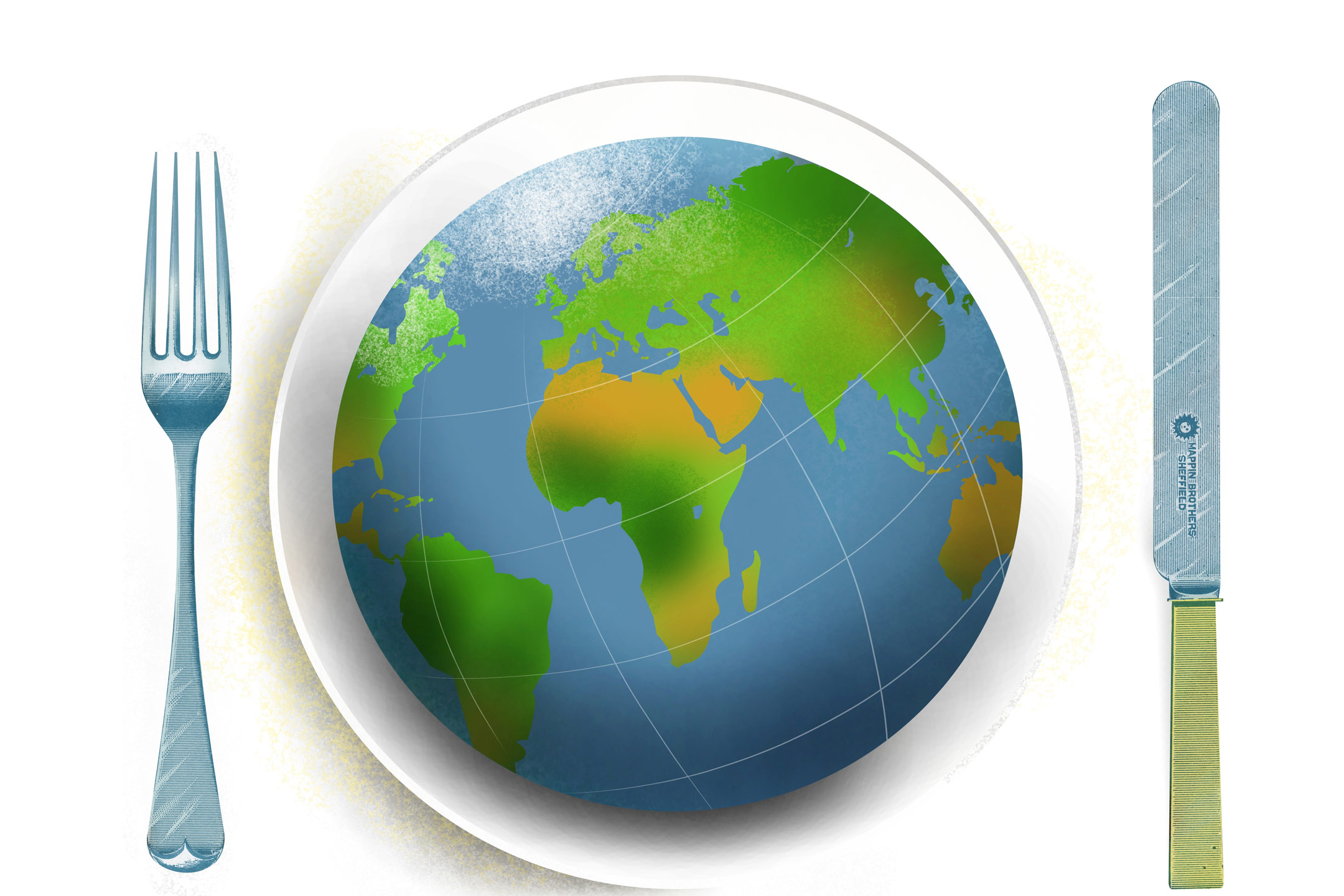
30 Jun The Future Of Our Food
Professor Bill Bellotti encourages us to challenge the existing world views on what we should eat.
We live in interesting times, especially for an agronomist like myself – but also for anyone who has to feed a family. Hardly a day goes by without some new headline related to food and agriculture. The global food price index has hit a record high, and more people than ever before (about one billion) are food insecure. At the same time, overeating and sedentary lifestyles have made obesity-related diseases a huge health challenge in developed countries.
In Australia, our biggest food retailers have been locked in a price wars; the use of hormones in beef production is being challenged and the contentious issue of genetically modified crops entering our food chain remains unresolved. Climate change is forecast to hit southern Australian farmers through lower rainfall, higher temperatures, drier soils and weaker river flow, exacerbated by diversion of water from food production to address environmental concerns. Energy prices are rising, resulting in an increase in the price of key agricultural inputs such as fertilisers, the cost of pumping irrigation water, diesel for tractors and transport. Then there’s the introduction of a market solution to the problem of carbon pollution. All of these influences – increasing population, food demand, science and technology, climate change, water scarcity and rising energy costs – will have an impact upon our future food-production systems, and ultimately upon the price we pay for our food.
You may be wondering what you can do in the face of these global trends. The starting point is to recognise that as a food consumer, you are the reason for the existence of our current food-supply systems. There are many stories of children believing that milk comes from the fridge, cereal comes from a carton, and sugar comes from a packet. This disconnection has serious implications for our personal health, the health of our environment, and the economic and social viability of the rural communities where most of our food is produced.

So next time you sit down to breakfast, it may be helpful to reflect on your food’s connection to the wheat, corn and sugar-cane fields, the dairy cows, the chickens, the orange orchards and the tea or coffee plantations – and the food-supply chains that have transformed these raw agricultural commodities and transported them to your plate.
As a consequence of modern food-supply chains, most consumers have become complacent over food, and passive in their food choices. Key determinants of food-purchasing decisions include price, taste and convenience rather than ethical considerations. Such ethical considerations might include whether or not: the grower received a fair price, the livestock were treated humanely, the land was managed sustainably, the food is safe and nutritious – and, finally, what is our food footprint? Why have we allowed the natural resources that underpin our food-production systems to become degraded? Why does agriculture always lose out to urban expansion or mining when land use is in conflict? Why are the businesses that produce our food under severe financial pressure?
In short, why is our relationship to the food we eat – such a basic requirement for life – so dysfunctional?
To respond to these questions, we need to examine our personal values and to see all these issues as interrelated. That involves realigning public perceptions and challenging existing world views, with potential benefits for health, the environment and equity in our food systems.
‘Food Literacy’ is a multifaceted concept that comprises three integrated components: food, nutrition and health; agriculture, environment and ecology; and social development and equity.
The founder of the Slow Food movement, Carlos Petrini, abbreviates this to ‘good, clean and fair’. These three ‘domains’ have been treated separately in the academic world, but in the real world theoretical constructs of academic disciplines sometimes have limited value and food cuts across all three academic domains every day in all of our lives.
It is time academics and governments caught up with the reality of food. Improving the general level of food literacy in society will have benefits within the domains, but the real challenge is to successfully integrate benefits across all three of them in order to realise new synergies in environment, agriculture, food, health and community development.
So, the fundamental question for parents is: ‘How do my food choices influence my personal health and the health of my family?’. Then, more broadly: ‘What is the impact of my food choices on the environment?’
The agricultural sector is accountable for 70 per cent of Australia’s total water use, and agriculture is responsible for 16 per cent of Australia’s greenhouse-gas emissions. While our food choices represent perhaps our largest impact on the environment (land, water and energy), there is still a high level of uncertainty over what measures we, as individuals, can take in order to reduce our food footprint. The good news is that we have considerable scope for personal action, including reducing food waste, buying food in season, eating less meat, buying food with less packaging and eating less highly processed food.
Other questions we can ask ourselves include, ‘How equitably is my food-purchasing dollar distributed along the food chain?’ and ‘How do my food choices affect local communities?’ These questions represent a major departure from the dominant economic paradigm of contemporary food and agricultural economics with its focus on global commodity markets, multinational food corporations, long food-supply chains, and emphasis on farm productivity over farm profitability.
To illustrate this point, consider a typical loaf of bread. The consumer pays, for example, $2.80 for a small loaf of bread, and the wheat farmer receives just 13 cents for the grain used in that typical loaf. How much did processing and transport cost? What about the cost of the other ingredients? Packaging? Advertising? Of the 13 cents received by the farmer, operating costs (seed, fertiliser, diesel, sowing, harvesting) account for about seven cents, leaving just six cents per loaf for the farmer to cover other business costs (interest, depreciation, rates), living costs and profit to enable future investment in productivity-enhancing technology. The farmer’s share of the consumer’s food dollar has been in decline since the advent of modern food-supply chains.
Food and agricultural science can play an important role, but science alone will not be enough to meet the looming future food challenge. We all need to support initiatives that reduce food waste, that recycle water and organic material from our densely populated cities back to peri-urban farmland, and support the financial viability of local food producers. We need to make the transition from focusing on quantity to focusing on quality, slow food over fast food, ecology over profit, communities over corporations.
About 10,000 years ago, humans made the first transition from a hunter-gatherer society to an agriculture-based society. This momentous event was the precursor to cities, writing, political organisation and technology. Today we require a similar momentous transition: from our current dysfunctional relationship with food, to sustainable food systems that respect individual health, the natural resource base and local communities. There are many challenges to making this transition, but improving our food literacy will be an important component of future sustainable food systems.
Professor Bill Bellotti, Professor and Director Food Systems Program, Global Change Institute, The University of Queensland
Illustrations by Gregory Baldwin




